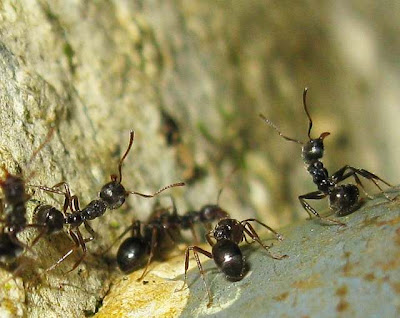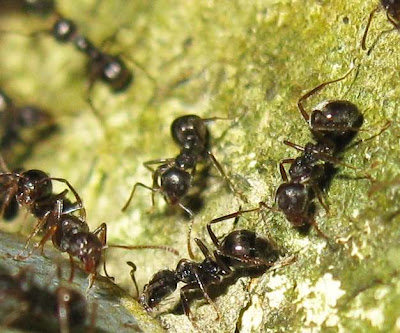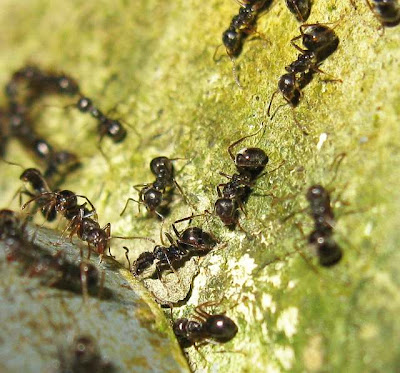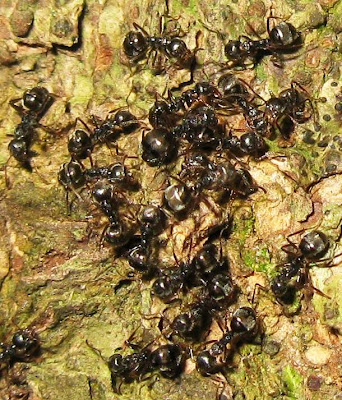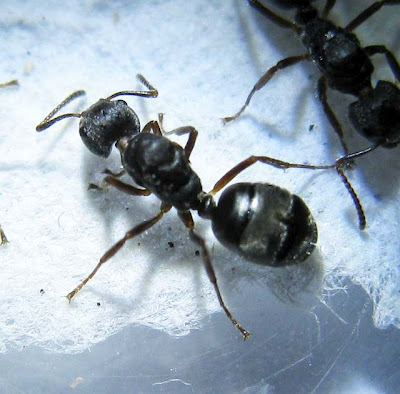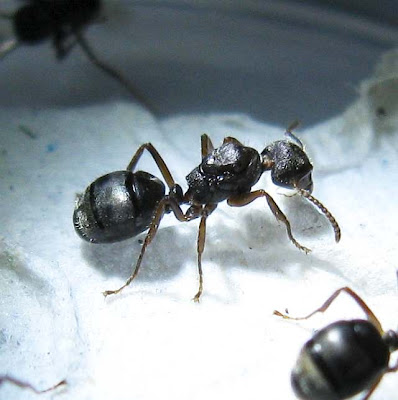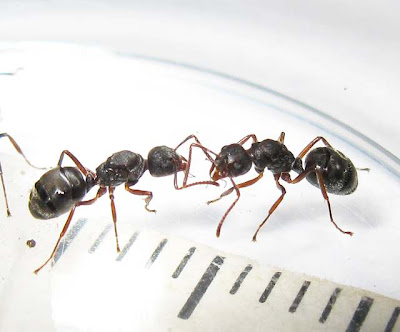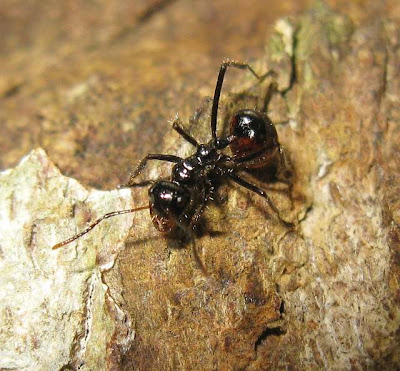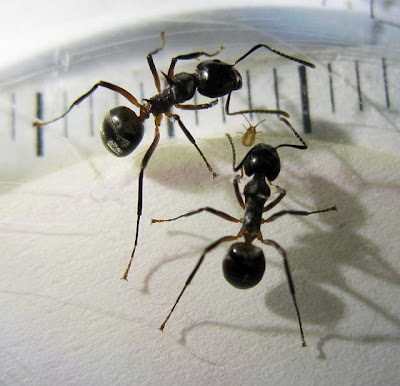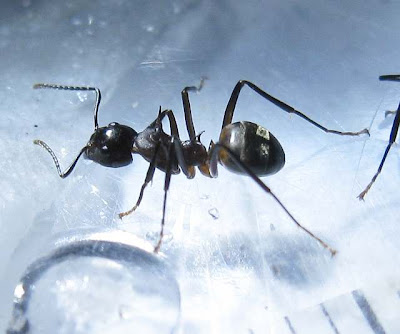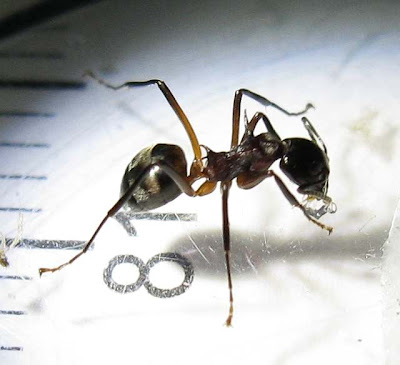Dolichoderus bituberculata is small black ant commonly found in fruits orchards and occasionally in parks where the locals loved to picnic. Dolichoderus bituberculata is monomorphic and polygynous. Very large colonies with hundreds of queens and numbers tending towards super colony size and coverage were once common in fruit orchards until the extensive use of pesticide mostly wiped them out.
Today nests with small numbers may be found in secondary forest and abandon land overgrown with shrub and low grade trees. Colonies of Dolichoderus bituberculata have a tendency to grow very large with wipe foraging coverage and numerous sub nests.
Today nests with small numbers may be found in secondary forest and abandon land overgrown with shrub and low grade trees. Colonies of Dolichoderus bituberculata have a tendency to grow very large with wipe foraging coverage and numerous sub nests.
The 'rambutan' ants Dolichoderus bituberculata.
Rambutan ants Dolichoderus bituberculata workers.
Rambutan ants Dolichoderus bituberculata.
Workers of the rambutan ants Dolichoderus bituberculata.
Workers of Dolichoderus bituberculata.
Workers of Dolichoderus bituberculata.
Dolichoderus bituberculata ant workers.
Workers and a queen of Dolichoderus bituberculata.
A major part of the Dolichoderus bituberculata ants' diet are honey dew and plant sugary secretions.
Dolichoderus bituberculata against minor worker of Camponotus. The casualty rate ten to one Camponotus, but Dolichoderus bituberculata can afford the losses. One of the probable reason Dolichoderus bituberculata, Oecophylla smaragdina and even Anoplepis gracilles are not found in primary forest could be because Camponotus are fierce defender of their nest area and aggressively attack any large group of foraging ants that encroaches.
Workers and a queen of Dolichoderus bituberculata.
A queen of Dolichoderus bituberculata.
A gyne of Dolichoderus bituberculata.
Queens of Dolichoderus bituberculata.
Queens of Dolichoderus bituberculata.
This species looks a bit like Polyrhachis australis.
But it has a red colored under gaster.
The monomorphic worker of Dolichoderus sp2.
Dolichoderus cuspidatus. This species of the Dolichoderus genus has three sets of spines (thorns). The first set of large straight spine is on the top of the second thoracic segment (mesonotum) just after the first thoracic segment (pronotum). This set on the anterior end of the mesonotum protrudes out joined before branching sideways into a sort of V-shaped spines. The second set of curvy spines at the posterior of the metanotum is similar joined before branching. The third set of tiny spines is on the petiole node.
The first set of spines grows out right from the middle of the anterior of the mesonotum before branching outwards.
The second set of spine is on the metanotum and is curved outwards and backwards.
Dolichoderus sp(06)
A dimorphic species of the Dolichoderus genus.
See also:
Taxonomy:
No rank: cellular organisms 131567
Superkingdom (Domain): Eukaryota 2759
No rank: Opisthokonta 33154
Kingdom: Metazoa 33208
No rank: Eumetazoa 6072
No rank (Subkingdom): Bilateria 33213
No rank (Branch): Protostomia 33317
No rank (Infrakingdom): Ecdysozoa
No rank (Superphylum): Panarthropoda 88770
Phylum: Arthropoda 6656
No rank (Subphylum): Mandibulata 197563
No rank: Pancrustacea 197562
Subphylum (Epiclass): Hexapoda 6960
Class: Insecta 50557
No rank (Subclass): Dicondylia 85512
Subclass (Infraclass): Pterygota 7496
Infraclass: Neoptera 33340
Cohort: Holometabola
Order: Hymenoptera 7399
Suborder Apocrita 7400
Infraorder: Aculeata 7434
Superfamily: Formicoidea
Family: Formicidae 36668
Subfamily: Dolichoderinae 40139
Genus: Dolichoderus 121500
Species: bituberculata
Species: bituberculata
Last Updated: 2022 07 21
First Posted: 2012 09 25
© 2011 – 2022 Quah. All rights reserved.


